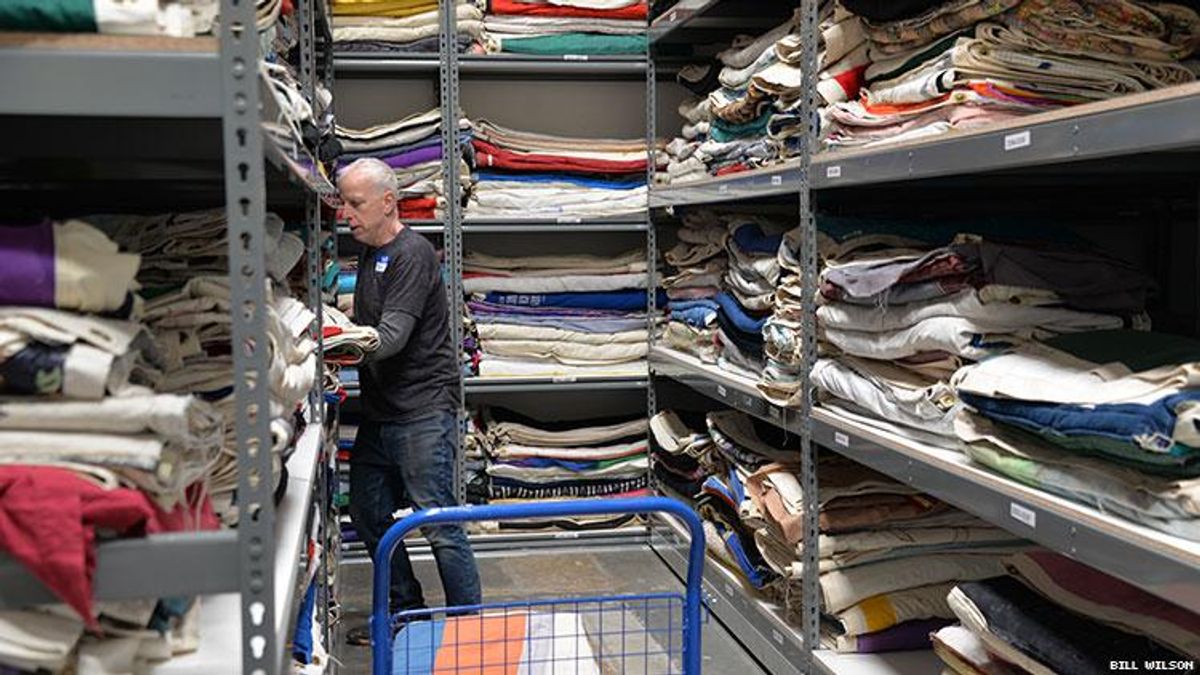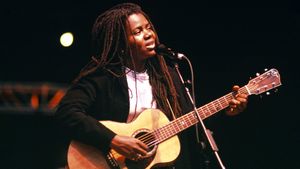This month, all 48,000 panels of the AIDS Memorial Quilt arrived in the San Francisco Bay Area from Atlanta with the care and stewardship of this iconic and historic treasure officially transferring to the National AIDS Memorial.
As each panel of the quilt was unloaded by volunteers into its new home, we couldn't help but be overcome with emotion about the immense power of the quilt and the responsibility we now have to ensure that this extraordinary piece of history, art, activism, and hope continues to be protected and shared for future generations.
Over the course of three decades, each panel of the quilt has been sewn together by friends, lovers, and family members, to commemorate more than 105,000 lives lost to HIV and AIDS. More than 675,000 people in the U.S. have died from the disease since the pandemic began devastating communities across the country nearly 40 years ago.
In the coming months, the National AIDS Memorial will work to build upon the quilt's mission as a powerful visual reminder of the devastating impact of AIDS and use the personal stories sewn into each panel to educate communities throughout the U.S. about this important issue, which sadly remains with us today, nearly 40 years since the first AIDS diagnosis.
During that span of time, the face of HIV and AIDS has changed. Today, there is hope, where there was once only a death sentence. But there are more than 1.1 million people currently living with HIV in the U.S, with nearly 15 percent of them not knowing and in need of testing. And in 2018, there were more than 38,000 people in the U.S. who received an HIV diagnosis, with half of those being from regions of the South, of racial and ethnic minorities, and gay and bisexual men.
The quilt, as it has been for years, is an important and powerful tool to educate these and other communities about the impact of HIV and AIDS today. As the National AIDS Memorial embarks on this new journey in the quilt's long history, a key priority is to launch a new public education effort that will bring the quilt to the South and communities of color as part of a larger education and awareness effort to use the power of the quilt to effect change.
The first such educational effort will take place in Golden Gate Park April 3 to 5 as part of the park's 150th anniversary celebration. There will be 1,920 quilt panels on display, approximately the same size and shape as the first major quilt display that took place in Washington D.C., in 1987. The Golden Gate Park 150th Anniversary display will be made up of panels that have been added to the quilt's nearly 50,000 panels in recent years, reflecting the story of HIV and AIDS during the past decade, particularly in communities of color.
Thanks to the support of Gilead Sciences, which has provided a $2.4 million donation to the National AIDS Memorial, this display in Golden Gate Park will officially launch a new public education program in 2020 that will take the quilt to communities across the country to help educate, heal, and reach a new generation of people about the story of AIDS, which can only be told through the quilt.
The National AIDS Memorial welcomes volunteers to participate in this historic quilt display and encourages visitors from all across the country to see and experience the quilt and the stories and lives it tells through each stitch of each panel.
The quilt display on April 3-5 will be a subtle reminder of what we all have lost, how far we have come, and where we need to go in the future to remember, to heal, and to educate future generations about the devastating toll of this disease and the ongoing impact of that continues today.
Details about the display, including volunteer sign-up information, and more, can be found at AIDSMemorial.org and GoldenGatePark150.com.
John Cunningham is the executive director of the National AIDS Memorial.


















































































